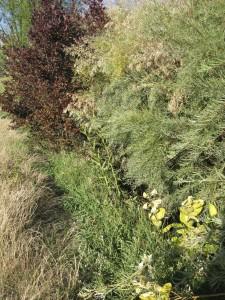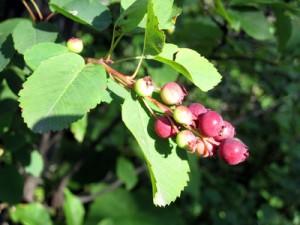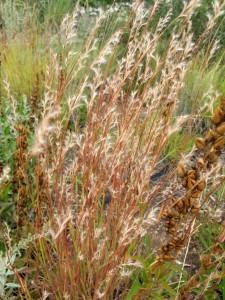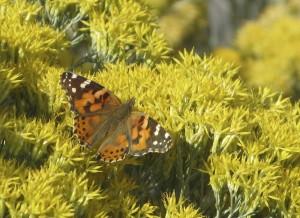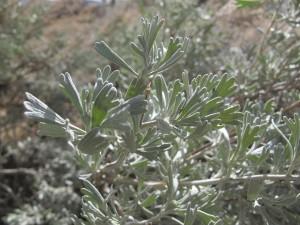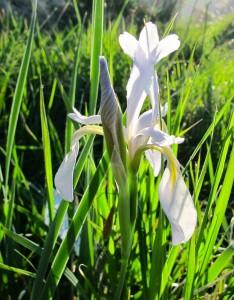Now's the Time to Plan Your Wildscape!
Late summer and early fall in the Central and Southern Rocky Mountain region is a great time to plant perennials, scatter seeds, and plan next year's garden. Are you looking for ideas about plants to add that will provide songbird and pollinator habitat?
We asked the original Habitat Heroes about their favorite wildscape plants. Here are suggestions appropriate for fall planting, along with tips on how to grow these habitat-nurturing species.
Berry-Producing Shrubs
Barbara, who created a wildscape on her city lot bit by bit by covering the bluegrass lawn under newspaper 12 sheets thick, saturating that with water, and then covering it with bags of soil, loves "berry-producing bushes," including chokecherry and serviceberry, both native to the region. They do double duty, feeding wildlife and providing fall color.
For more berry-producing shrubs for birds, and why they're so important to our avian neighbors, see "Turn Your Yard into a Winter Refueling Spot for Birds" from Audubon Magazine.
Native Grasses
Ruth and Ron on the High Plains contend with thin, nutrient poor soils over impervious shale layers. They mulch native plants with pea gravel to keep down the weeds and keep water from evaporating out of the soil. Favorite plants include native bunchgrasses like little bluestem (Schizachyrium scoparium) and silky thread grass (Nasella tenuissima) for accent form and foliage color, seeds for birds, and cover in winter and summer.
Their tip: "Know the habitat needs of your plants."
Rabbitbrush and Big sagebrush
Gayle lives where the pinyon-juniper woodland meets the montane forests of the Rocky Mountains, with hot and dry summers and lots of wildlife, from turkey and mule deer to migrating hummingbirds. She uses tall and drought-tolerant native rubber rabbitbrush (Ericamera nauseosa) and big sagebrush (Artemisia tridentata) to screen her house from the road and provide cover for songbirds and butterflies.
She advocates taking a relaxed to attitude to deer and other wildlife eating your plants, and not being so "armed and alarmed."
Rocky Mountain Iris
Dave, gardening on a town lot at the foot of the Front Range in Colorado succeeded in getting native blue flag or Rocky Mountain iris (Iris missouriensis), a plant that prefers its feet wet in spring, to grow in his yard without supplemental water. He planted the Rocky Mountain iris by a downspout, where it gets watered naturally.
Fall is the perfect time to transplant Rocky Mountain iris tubers, when they can put down roots and bloom the next spring, releasing their faint licorice scent to attract pollinators. (Please don't dig irises from the wild; find a nursery that propagates them.)
Order a copy of Colorado Wildscapes, Bringing Conservation Home, for more plant and planting ideas. Thank you for making a home for songbirds and pollinators in your yard!
By Habitat Hero
Stay in the Know
Sign up for emails to stay up to date on how you can help and enjoy birds in Colorado, Wyoming, and Utah.

